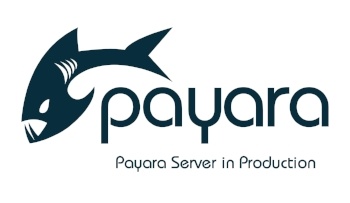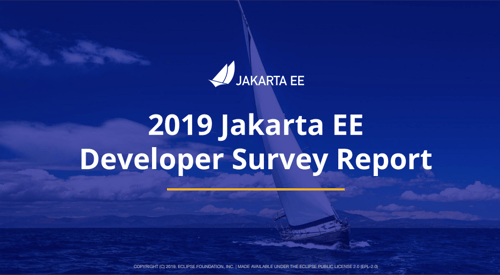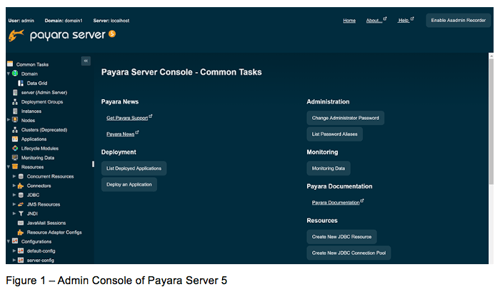Archive from May 2019
Payara Platform 5.192 is Compatible with MicroProfile 2.2
Published on 31 May 2019
by Jan Bernitt
Topics:
Microservices,
MicroProfile,
Payara Platform 5,
New Releases
|
0 Comments
The Payara Platform 5.192 release comes with an update to MicroProfile. Compared to MicroProfile 2.1, four components were updated in MicroProfile 2.2:
What's New in Payara Platform 192?
Published on 29 May 2019
by Arjan Tijms
Topics:
Payara Micro,
Payara Server 5,
Payara Platform,
New Releases
|
2 Comments
Swisscom Relied on Payara Support Services to Migrate from GlassFish to Payara Server
Published on 23 May 2019
by Debbie Hoffman
Topics:
Payara Support,
success stories,
Payara Enterprise
|
0 Comments
When a leading telecoms company in Switzerland, Swisscom, transitioned to Payara Server from GlassFish for their mission critical applications, they found the migration easy and without problems. In fact, having Payara Enterprise Support meant Swisscom had access to a customer-only build which shortened the time to getting a fix to test by two months and 24x7 access to Payara engineers.
Fine Tuning Payara Server 5 in Production
Published on 21 May 2019
by Fabio Turizo
Topics:
Production Features,
JVM,
Payara Server 5
|
13 Comments
One of the biggest challenges when developing applications for the web is to understand how they need to be fine-tuned when releasing them into a production environment. This is no exception for Java Enterprise applications deployed on a Payara Server installation.
Running a Payara Server setup is simple: download the current distribution suited for your needs (full, web); head to the /bin folder and start the default domain (domain1)! However, keep in mind that this default domain is tailored for development purposes (a trait inherited from GlassFish Server Open Source). When developing a web application, it’s better to quickly code features, deploy them quickly, test them, un-deploy (or redeploy) them, and continue with the next set of features until a stable state is reached.
(last updated 06/04/2021)
Scaling Payara Micro Applications with Kubernetes
Published on 14 May 2019
by Rudy De Busscher
Topics:
Payara Micro,
Kubernetes
|
2 Comments
When using Docker images as the way to deploy your application, many organizations use Kubernetes to manage the containerized version of their application. This blog gives you a short overview of Kubernetes and how to run your Payara Micro application in a scaled fashion by either defining the scaling manually, or automatically by the Horizontal Pod scaler.
The Cloud is Driving the Future of the Java Ecosystem and Jakarta EE: Eclipse Foundation Survey Results
Published on 09 May 2019
by Debbie Hoffman
Topics:
Java EE,
JakartaEE
|
1 Comment
Jakarta EE 8 and Beyond
Published on 03 May 2019
by Steve Millidge
Topics:
Java EE,
JakartaEE
|
2 Comments
Today the Eclipse Foundation have announced an Update on Jakarta EE Rights to Java Trademarks which has dramatic implications for the future of Java EE and Jakarta EE. The Payara team have only recently learned about this - so we thought we would blog about how we feel this impacts customers and users of the Payara Platform. We'll also give our thoughts on how Jakarta EE should evolve given the constraints outlined in Mike Milinkovich's blog from the Eclipse Foundation.
Basics of Payara Server Admin Console - #1 Overview and Concept
Published on 02 May 2019
by Kenji Hasunuma
Topics:
Payara Server Basics - Series
|
4 Comments
This is the first article of “Basics of Payara Server Admin Console” blog series. I’ll explain how to use Admin Console of Payara Server in this blog series. In this article, I’ll explain the concept of Admin Console and its role in Payara Server, which is important before you start using the Admin Console.
Proud to be Sponsoring JConf Colombia 2019
Published on 01 May 2019
by Jadon Ortlepp
Topics:
news and events
|
0 Comments
We are thrilled to be again sponsoring the JConf Colombia conference this year.








